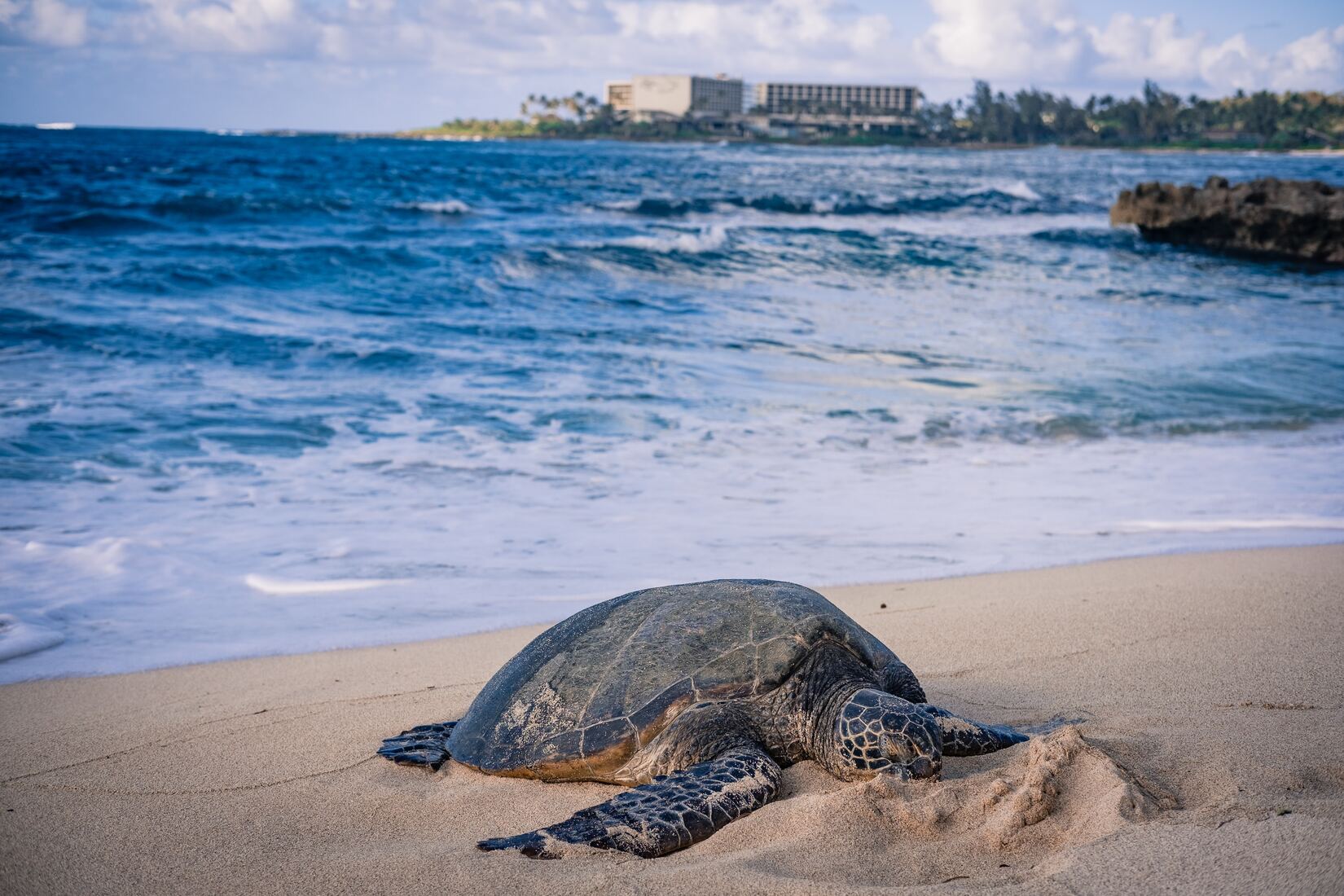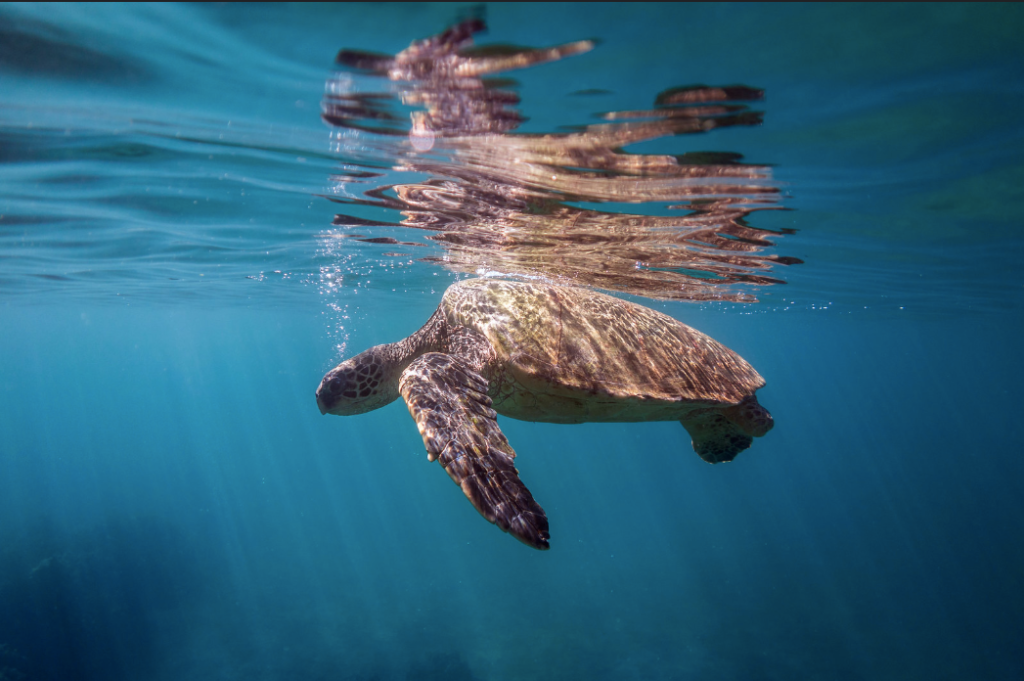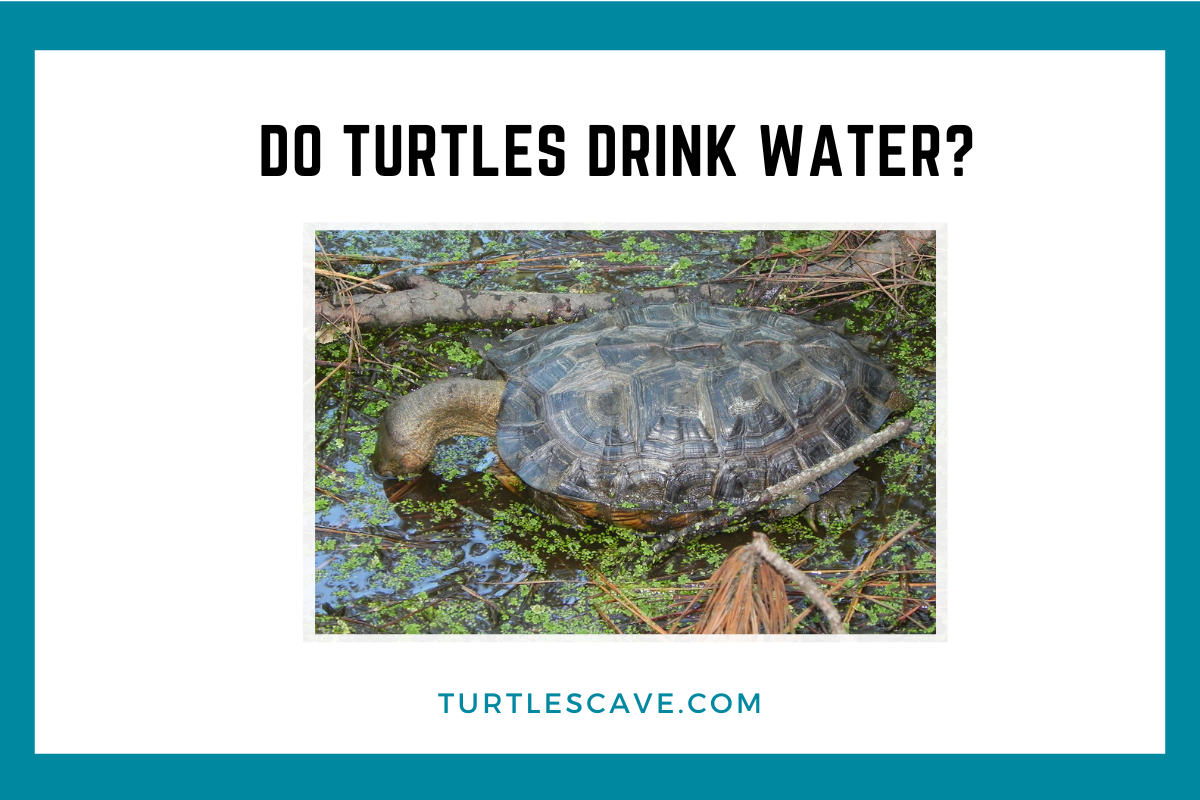Yes, turtles do drink water, but not in the way that humans or other animals do. Turtles drink water through a process called “imbibing” where they absorb water through their skin or take in water while eating.

Credit: www.royalcaribbean.com
Do Turtles Drink Water?

Credit: Lance Sagar
Explanation Of Turtles’ Need For Hydration
Turtles, like other living creatures, require hydration to survive. Water is essential for turtles as it aids in various bodily functions and helps maintain overall health and well-being. The following points explain the importance of water for turtles:
- Hydration: Turtles need water to stay hydrated as it prevents dehydration and maintains their bodily fluids at an optimal level.
- Respiration: Water enables turtles to breathe properly, both through their lungs and specialized structures present in their anus called cloacal bursae.
- Thermoregulation: Turtles use water to regulate their body temperature. By basking in the sun and then cooling off in the water, turtles can avoid overheating.
- Metabolism and digestion: Water plays a crucial role in metabolic processes and aids in digestion. It helps turtles break down food, absorb nutrients, and eliminate waste from their bodies.
- Excretion: Turtles eliminate waste substances through urination and defecation, both of which require an adequate intake of water.
How Turtles Obtain Water From Their Environment
Turtles have unique adaptations that allow them to obtain water from their surroundings. Here’s how turtles fulfill their water requirements:
- Aquatic habitats: Many turtle species live in aquatic environments such as rivers, lakes, and ponds. They obtain water directly from their habitats by immersing themselves in water or drinking it.
- Rainwater: Turtles also drink rainwater that collects on their shells or in small puddles. This is particularly common among semi-aquatic turtle species.
- Moisture from food: Turtles acquire some moisture through the food they consume. Vegetation, insects, and other prey items often contain water, which turtles can absorb during digestion.
- Water conservation: Turtles have evolved efficient methods to conserve water. They have specialized kidneys that concentrate urine, reducing water loss. Additionally, some freshwater turtles can reabsorb water through their cloacal bursae.
Importance Of Water For Various Bodily Functions Of Turtles
Water plays a crucial role in maintaining the overall health and vitality of turtles. Here are some key bodily functions that rely on water:
- Cell function: Water is essential for the proper functioning of cells in a turtle’s body. It enables biochemical reactions, transport of nutrients, and removal of waste products.
- Hydration of tissues: Water helps keep turtle tissues, including skin, muscles, and organs, hydrated. This promotes their elasticity, flexibility, and overall functionality.
- Electrolyte balance: Turtles need water to maintain the balance of electrolytes, such as sodium, potassium, and chloride, in their bodies. These electrolytes are essential for nerve and muscle function.
- Shell health: Adequate water intake contributes to the maintenance of a turtle’s shell health. The outer layer of a turtle’s shell, called the scutes, needs hydration to remain strong and resilient.
- Reproductive processes: In female turtles, proper hydration is crucial for the development and health of eggs. Water also aids in the mating and courtship rituals of turtles.
Remember, water is not only vital for humans but also for our shelled friends, the turtles. Understanding their hydration needs helps us ensure their well-being and conservation.
The Role Of Aquatic Habitats In Turtles’ Lives
How Aquatic Habitats Serve As A Crucial Part Of Turtles’ Lives
Turtles, as semi-aquatic creatures, depend heavily on aquatic habitats for their survival and well-being. These environments offer numerous benefits that directly impact their daily lives. Let’s explore some key points that highlight the importance of aquatic habitats in the lives of turtles.
- Benefits of living in water for turtles:
- Hydration: Aquatic habitats provide turtles with a readily available water source, allowing them to stay hydrated at all times.
- Temperature regulation: Water helps turtles regulate their body temperature, preventing overheating or excessive cooling.
- Food availability: Aquatic environments are rich in food sources, providing turtles with a readily available supply of plants and small aquatic animals.
- Provide buoyancy for turtles:
- Aquatic habitats offer turtles the ability to float effortlessly, reducing the strain on their limbs and allowing them to rest and conserve energy.
- Buoyancy also plays a crucial role during reproduction, as female turtles can lay their eggs in the water, ensuring a safe and buoyant environment for their development.
- Allow for easier movement and navigation:
- Turtles’ bodies are uniquely adapted for swimming. Their streamlined shape and flippers enable efficient movement through water.
- Aquatic habitats provide turtles with freedom of movement, enabling them to search for food, find shelter, and reach suitable nesting sites more easily.
- Water acts as a natural medium for navigation, assisting turtles in finding their way by following currents, landmarks, and magnetic fields.
The aquatic habitats that turtles call home serve as an integral part of their lives, providing numerous benefits such as hydration, temperature regulation, buoyancy, and facilitating movement and navigation. Understanding the significance of these habitats helps us appreciate the intricate relationship between turtles and aquatic ecosystems.
Turtles’ Drinking Behavior In The Wild
Description Of How Turtles Drink Water In The Wild
In the wild, turtles have unique drinking behaviors that help them stay hydrated. Here are some key points about their drinking habits:
- Turtles primarily obtain water through their food, as many species feed on plants and prey that contain moisture.
- Some turtles drink water directly, either by submerging their mouths or by absorbing it through their skin and cloaca (a multi-purpose opening used for excretion and reproduction).
- Drinking water is essential for turtles to maintain their metabolic functions and prevent dehydration.
- Turtles have an amazing ability to drink and store large amounts of water, which allows them to survive in diverse habitats with limited water availability.
Examples Of Specific Turtle Species And Their Drinking Habits
Different turtle species display various drinking habits based on their environments and feeding preferences. Here are some examples:
- Red-eared slider (trachemys scripta elegans):
- Red-eared sliders are semi-aquatic turtles and obtain most of their water through the plants they consume.
- They are known to drink water directly from ponds, lakes, and other freshwater sources by submerging their heads.
- These turtles can also absorb water through their skin and cloaca.
- Desert tortoise (gopherus agassizii):
- Desert tortoises reside in arid regions where water is scarce.
- They obtain a majority of their moisture from the plants they eat, such as cacti and succulents.
- Desert tortoises have specialized kidneys that enable them to reabsorb water from their urine, conserving as much liquid as possible.
- Leatherback sea turtle (dermochelys coriacea):
- Leatherback sea turtles primarily feed on jellyfish, which contain high levels of water.
- They obtain most of their hydration through their diet, rarely needing to drink vast amounts of water in the ocean.
Factors Influencing Turtles’ Drinking Patterns
Various factors influence turtles’ drinking patterns and water-seeking behaviors. Some essential factors include:
- Climate and environmental conditions:
: different climatic zones and habitats affect the availability of freshwater sources, which can influence turtles’ drinking behaviors.
: turtles in arid environments may have to adapt to limited water sources and find alternative ways to stay hydrated.
- Availability of freshwater sources:
: the presence of ponds, lakes, rivers, or other freshwater bodies can greatly impact the frequency and means by which turtles drink water.
- Food sources:
: the water content in turtles’ food plays a significant role in their overall hydration.
: species that consume juicy fruits, vegetables, or prey with high moisture content may rely less on direct water intake.
- Size and age:
: younger turtles may require more water intake compared to adults, as their bodies are still developing.
: larger turtles might need greater amounts of water to support their metabolism.
Understanding these factors helps us appreciate how turtles adapt to their environments and maintain their hydration needs in the wild.
Understanding Turtles’ Adaptations For Obtaining Water
Turtles, like other animals, require water to survive. While you may assume that turtles simply drink water like we do, their methods of obtaining and retaining water are quite fascinating. Let’s delve into the physiological adaptations that turtles have developed to ensure they stay hydrated even in arid environments.
Discussion On Turtles’ Physiological Adaptations For Water Absorption
Turtles have a remarkable set of adaptations that enable them to absorb and retain water efficiently. Here’s a closer look at these adaptations:
- Absorption through skin: Turtles possess a specialized skin that allows for the absorption of water. Their skin is permeable, meaning it can absorb water directly from their surroundings, including both freshwater and saltwater environments. This adaptation enables them to replenish their water reserves without relying solely on drinking.
- Cloacal bursae’s role: Turtles have an additional adaptation called cloacal bursae, which aids in water absorption. These bursae are small glandular structures located near their cloaca, the opening through which they excrete waste. The cloacal bursae act as an osmoregulatory organ, allowing turtles to absorb water through the cloacal opening, further enhancing their ability to stay hydrated.
- Moisture extraction from food: Another interesting adaptation turtles have developed is the ability to extract moisture from their food sources. This adaptation is particularly useful for species living in environments with limited access to water. Turtles can obtain a significant amount of water by breaking down and metabolizing the moisture-containing components of their food, such as plants and insects.
- Efficient water conservation: Additionally, turtles have remarkably efficient water conservation mechanisms. One of these mechanisms is the ability to reabsorb water from their own urine. By reabsorbing water that would otherwise be lost, turtles minimize water loss and maximize their hydration levels.
- Unique urinary bladder adaptation: Turtles also have a unique adaptation in the form of a urinary bladder that can expand to store urine. This bladder allows turtles to hold onto water for extended periods, ensuring they remain properly hydrated even in drought or during long periods without access to drinking water.
Turtles have developed various physiological adaptations to obtain and retain water effectively. Their permeable skin, cloacal bursae, ability to extract moisture from food, efficient water conservation mechanisms, and specialized urinary bladder allow them to thrive in diverse aquatic and terrestrial environments.
By understanding these adaptations, we gain a deeper appreciation for the remarkable ways in which turtles have evolved to survive and thrive in their habitats.
The Importance Of Proper Water Quality For Turtles
Turtles, like all living creatures, rely on water for their overall health and well-being. Adequate water quality is essential for turtles to thrive and live a long and happy life. Let’s explore the impact of water quality on turtles’ health and some key factors to consider in maintaining clean water for them.
Exploring The Impact Of Water Quality On Turtles’ Health And Well-Being:
- The quality of water directly affects turtles’ health, as they depend on it for drinking, bathing, and even thermoregulation.
- Poor water quality can lead to various health issues, including respiratory and skin infections, digestive problems, and weakened immune systems.
- Exposure to harmful substances and pollutants in the water can have long-term detrimental effects on turtles’ overall well-being and even lead to death in severe cases.
- Maintaining appropriate water quality helps ensure that turtles maintain optimal buoyancy and can engage in their natural behaviors.
The Role Of Clean Water In Preventing Diseases And Infections:
- Clean water plays a vital role in preventing diseases and infections among turtles. Here’s how it contributes to their well-being:
- Clean water inhibits the growth and spread of harmful bacteria, parasites, and fungi that can cause infections.
- Proper filtration and regular water changes help remove accumulated waste, excess food, and other debris that can harbor disease-causing organisms.
- By providing turtles with clean water, we can minimize the risk of respiratory infections, shell rot, and other waterborne diseases commonly observed in captive turtles.
- Maintaining optimal water conditions also supports turtles’ ability to heal and recover from injuries or illnesses.
How Poor Water Quality Can Affect Turtles’ Hydration And Overall Health:
- Poor water quality affects turtles’ hydration, which is crucial for their overall health and bodily functions:
- Water contaminated with pollutants, chemicals, or excessive ammonia levels can discourage turtles from drinking, leading to dehydration.
- Dehydration can lead to severe health issues, such as kidney problems, shell abnormalities, and compromised immune systems.
- Poor water quality also hampers turtles’ ability to effectively regulate their body temperature, as dirty or stagnant water may not provide sufficient cooling or warming opportunities.
- Additionally, inadequate water quality can induce stress in turtles, which weakens their immune system and makes them more susceptible to diseases.
Maintaining proper water quality is of utmost importance for the health and well-being of turtles. By providing clean water and closely monitoring its quality, we can help ensure that turtles thrive in their aquatic habitats and enjoy a long and fulfilling life.
Ensuring Adequate Water Supply For Pet Turtles
Advice For Turtle Owners On Providing Appropriate Water Sources For Pet Turtles
If you’re considering getting a pet turtle, it’s important to understand the vital role of water in their lives. Turtles need water not just for swimming, but also for drinking, excreting waste, and maintaining their overall health. As a responsible turtle owner, you need to ensure that you provide your pet turtle with an adequate water supply.
Here are some guidelines to help you in this regard.
Water Requirements For Different Turtle Species
Different turtle species have different water requirements. Some turtles, like aquatic turtles, spend most of their time in water and need a large volume of water to swim and dive. Additionally, some species are semi-aquatic and require both water and land areas for their well-being.
It’s essential to research and understand the specific needs of your turtle species to provide the most suitable water environment. Here are a few key points to consider:
- Aquatic turtles: These turtles require a large space with plenty of water for swimming and diving. A deep enough area also allows them to regulate their body temperature effectively.
- Semi-aquatic turtles: These turtles need a habitat that includes both water and a dry land area. The water portion should have enough depth for swimming, while the land area should be suitable for basking and perching.
Tips For Maintaining Clean And Suitable Water Conditions
Ensuring clean and suitable water conditions is crucial for the health and well-being of your pet turtle. Here are some tips to help you maintain a proper aquatic environment:
- Filtration system: Install a reliable filtration system in the turtle tank to remove impurities, toxins, and keep the water clean.
- Water temperature: Maintain an appropriate water temperature depending on the turtle species. Most turtles prefer a temperature between 75-80°f. Use a heater or a chiller to regulate the water temperature accordingly.
- Water quality: Regularly test the water quality, including ph, ammonia, nitrate, and nitrite levels. Keep the water parameters within the recommended range for your turtle species.
- Partial water changes: Perform regular partial water changes to remove waste and refresh the habitat. Aim for changing about 25-50% of the water volume every 1-2 weeks, based on the turtle’s needs.
- Dechlorinated water: It is important to use dechlorinated water for turtles, as chlorine and chloramines in tap water can be harmful to them. Always use a water conditioner to remove these chemicals before adding water to the tank.
- Monitor water level: Check water levels regularly to ensure they are adequate for turtles to swim and dive comfortably.
Remember, providing a clean and suitable water environment for your pet turtle not only ensures their physical health but also their mental well-being. By following these guidelines, you can create a thriving habitat where your turtle can flourish.
Frequently Asked Questions For Do Turtles Drink Water?
Do Turtles Drink Water?
Yes, turtles do drink water. They obtain water through the food they eat and by drinking from ponds, lakes, or rivers. They don’t drink water like we do because their bodies are adapted to store and retain water for longer periods.
How Do Turtles Get Their Water?
Turtles get their water through the food they eat, which contains moisture. Additionally, they will drink water directly from ponds, lakes, or rivers when they are dehydrated. Turtles are also able to absorb water through their skin, which helps them stay hydrated.
How Much Water Do Turtles Need?
The water requirements for turtles vary depending on their species, size, and environment. Generally, turtles need access to shallow water for drinking and bathing, as well as a larger space for swimming. It’s important to provide clean water and monitor their hydration levels to ensure their well-being.
Can Turtles Survive Without Water?
No, turtles cannot survive without water. Water is essential for their survival as it helps them maintain their body temperature, supports their vital functions, aids in digestion, and keeps their skin healthy. Lack of access to water can lead to dehydration and various health issues for turtles.
Can Turtles Drink Tap Water?
Turtles can drink tap water, but it is important to remember that some tap water may contain chlorine or other chemicals that can be harmful to them. It is recommended to use dechlorinated water or let tap water sit for a day to allow chemicals to dissipate before giving it to your turtle.
How Often Should I Give Water To My Pet Turtle?
It is important to provide a constant source of clean water for your pet turtle. You should refresh the water daily or as needed to ensure it remains clean and suitable for drinking and swimming. Regularly monitor the water level to prevent it from getting too shallow.
Conclusion
To answer the question “do turtles drink water? ” – yes, turtles do drink water, but not in the same way humans or other animals do. Due to their unique anatomy, turtles obtain water from their environments through different means.
Aquatic turtles, for example, absorb water through their skin and also take in water while eating their food, which helps keep them hydrated. On the other hand, land-dwelling turtles have a higher need for water, as they do not have constant access to it like their aquatic counterparts.
Recent Posts
Hermann tortoises can eat watermelon, but only in moderation. This fruit should not be a staple in their diet due to its high sugar content. Hermann tortoises are fascinating creatures that...
Turtles headbutt black things due to their instinctual response to threats or territorial disputes. When turtles encounter black objects, they may perceive them as intruders or competitors, leading...

